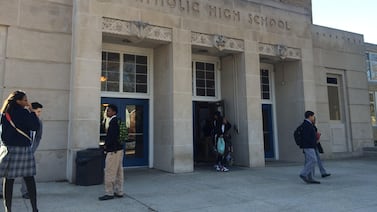Indianapolis schools and districts are getting a small influx of money to help them pay for the cost of technology for students as instruction goes remote during the pandemic.
A $1.5 million distribution from a newly established Marion County e-learning fund supported by several local foundations will be divided among schools around the city to help address device and internet access needs for students, according to an announcement from the mayor’s office of education innovation.
The money will be distributed based on the number of students from low-income families that schools serve. The largest chunk — about $256,000 — will be split among charter schools, which enroll about 17,600 students who qualify for free or reduced-price meals. Indianapolis Public Schools, the state’s largest district, will also receive over $246,000.
Marion County schools serve over 100,000 students who come from low-income families. The distribution amounts to less than $15 per child.
The money will help schools pay for badly needed technology for students. Nearly 39,000 Indianapolis students don’t have access to high-speed internet — about one out of four school children — according to surveys of school leaders compiled by the city. In IPS, administrators estimate that about 40% of students do not have reliable broadband.
Internet providers are offering special deals during the crisis to allow some families to get free internet. But as Chalkbeat reported, many families do not qualify for those deals because they have unpaid bills, and others are asked to pay installation fees.
Additionally, many students do not have laptops or tablets that are appropriate for doing schoolwork at home.
“We know schools are working around the clock to ensure students have opportunities to learn during this difficult time, and we’re proud we can do something to help them in that effort,” Mayor Joe Hogsett said in a press release.
While the initial wave of spending will go toward short-term needs, the remaining money will be used for longer-term e-learning investments and resources for schools, according to the release.
Here’s how much the e-learning fund will distribute to each district:
- Beech Grove City Schools $27,683
- MSD Decatur Township $68,356
- Franklin Township Community Schools $60,580
- Indianapolis Public Schools $246,310
- MSD Lawrence Township $151,246
- Perry Township Schools $175,973
- MSD Pike Township $117,709
- School Town of Speedway $16,931
- MSD Warren Township $108,622
- MSD Washington Township $98,801
- MSD Wayne Township $171,503
- Charter schools $256,286






